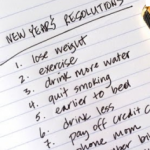April is Oral Cancer Awareness Month. Oral cancer is not a rare disease. Approximately 37,000 people will be diagnosed with oral cancer every year in the US. It kills one person every hour of every day, and over 100 new individuals will be diagnosed with it each day. The good news is that it can often be found early in its development, through a simple, painless, and quick screening. Visual screenings should be done at every check up, and enhanced screenings are offered to every patient at our dental office.
Who should get screened?
Every adult. Oral cancer can often be caught early, even as a pre-cancer. With early detection, survival rates are high and the side effects are from treatment are at their lowest. Like other screenings you engage in such as cervical, skin, prostate, colon and breast examinations, oral cancer screenings are an effective means of finding cancer at its early, highly curable stages. Make them part of your annual health check-ups.
What are the risk factors?
There are two distinct pathways by which most people come to oral cancer. One is through the use of tobacco and alcohol, a long term historic problem and cause, and the other is through exposure to the HPV16 virus (human papilloma virus version 16), a newly identified etiology, and the same one, which is responsible for the vast majority of cervical cancers in women. The quickest growing segment of the oral cancer population are young, healthy, non-smokers due to the connection to this virus.
Early Indicators:
Red and/or white discolorations of the soft tissues of the mouth.
Any sore which does not heal within 14 days.
Hoarseness which lasts for a prolonged period of time.
Advanced Indicators:
A sensation that something is stuck in you throat.
Numbness in the oral region.
Difficulty in moving the jaw or tongue.
Difficulty in swallowing.
Ear pain which occurs on one side only.
A sore under a denture, which even after adjustment of the denture, still does not heal.
A lump or thickening which develops in the mouth or on the neck.
Is Early Detection Screening Mandatory?
Currently there are no population based screening programs for oral cancer in the US, although early detection of oral cancer can increase survival rate to 80-90%. The American Cancer Society (ACS) and the American Dental Association (ADA) recommend opportunistic screening for oral cancer. The National Cancer Institute estimates that only 20% of the US population receives an annual oral examination. The ADA estimates that 60% of the US population visits a dentist every year, however less than 15% of those who visit the dentist regularly report having received an oral cancer screening.
An oral cancer screening should be conducted every year, so take advantage of the offer and get screened today.
For more information about oral cancer, please log onto The Oral Cancer Foundation’s official website at www.oralcancer.org.
 Patients who are missing one or more teeth sometimes choose to forego tooth replacement due to expense, discomfort, or anxiety associated with smile restoration. Whatever reasons patients have to avoid tooth replacement, the Dental Designs of New England team encourages them to reconsider. By replacing missing teeth, a patient ensures they are able to maintain the optimal level of oral health. We offer a variety of options, but the only solution that restores the entire smile from the roots up is dental implant supported tooth replacement.
Patients who are missing one or more teeth sometimes choose to forego tooth replacement due to expense, discomfort, or anxiety associated with smile restoration. Whatever reasons patients have to avoid tooth replacement, the Dental Designs of New England team encourages them to reconsider. By replacing missing teeth, a patient ensures they are able to maintain the optimal level of oral health. We offer a variety of options, but the only solution that restores the entire smile from the roots up is dental implant supported tooth replacement.










